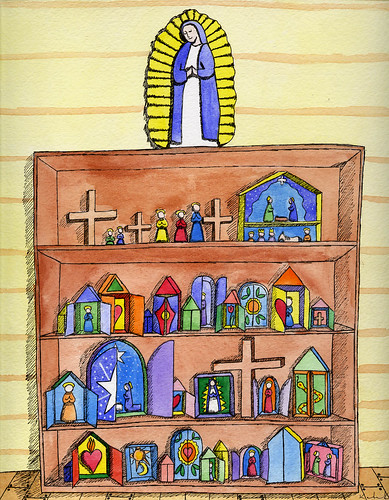In my work I come across all types of problems, some of which are developmental, neuropsychological, interpersonal, intrapsychic, while others are related to life events that are complicated by a number of factors.

Adjustment to death and dying is one of these. The most common account of the grieving process was said to proceed in stages beginning by denial, disbelief and shock, to anger, bargaining, depression and finally to acceptance (Kubler-Ross). It was considered a linear process that culminated in relinquishing the lost object and a return to previous functioning (moving on). This linear account has been refuted by newer clinical studies, in that :
- bereavement can not be described as linear progressive stages;
- grief is not just intrapsychic (doesn’t just happen to the person) but also interpersonal (affects relationships);
- grieving includes a variety of emotions not just sadness (or anger);
- returning to ‘normal functioning’ does not mean a return to previous functioning;
- and finally that denial is an important component of grieving (Lister, Pushkar, Connelly, 2008).
This is perhaps even more poignant for children when they lose a parent. Not only do they lose the person, but the entire family system is affected. Sometimes it means a significant loss of income and changes in living arrangements. Other times it means the other parent becoming so distraught that the child feels he has lost both parents. Other times it can mean a number of complicated grief reactions in siblings, or extended family members. Mourning can also be complicated by the nature of the relationship to the deceased parent. If for example the parent was abusive, angry, intrusive, or otherwise difficult, ambivalent and contradictory feelings can cloud the picture and delay the working through. Resolution can also be complicated by the nature of the death: violent, suicide, homicide, AIDS related for example.
Two newer models have been proposed: The dual process model and the meaning reconstruction model.
Both view the process of bereavement as a life long process and consider bereavement to be non-linear. In the first model, the process oscillates between loss orientation (processing the difficult emotions) and restoration-orientation where by the person adjusts to significant losses and changes created by the death.

In the Meaning reconstruction model, the search for meaning is a central focus to the process. Bereaved individuals find ways of renegotiating the relationship to the deceased into their life, by reworking their identity, with ramifications for their personal, social and professional life. In contrast to the stage based model, failure to follow a prescribed course does not mean the individual is stuck or regressing or has not dealt with the loss (p.248). Life brings on new stressors that make us revisit aspects of the loss that lead to further adjustments and new understanding.
Art therapists provide a number of creative opportunities to help the grieving processes along. Lister et al (2008) list the following:
- creative journals
- memorial pieces
- tokens that symbolize the deceased
- puppetry and doll-making
Personally I have facilitated the making of shrines, helping a mother and child share memories together. The shrine was made of pictures and token items that represented the deceased. It was a time to talk about who this parent was, his quirks, likes and dislikes, how the family system worked prior to his death, what was the relationship of the child to him, and how the loss impacted their family and life as they knew it.
I accompanied a daughter of five and her young mother who was dying of cancer in a process of saying good bye which was often times spontaneous as they drew pictures, talked and sang together. I was privy to incredibly poignant moments, filled with love and sadness.
I’ve worked with photo albums as story telling tools. Used some of the pictures to deconstruct difficult realities and reconstruct new ones. At times it was a means of giving the departed presence again, pictures providing a means to bridge the absence.
I’ve used hand made journals with a grieving individual to help in collecting and organizing memories and thoughts about the deceased. Journals are containers with a defined structure that help in holding and sorting scattered and confusing memories and feelings.
I’ve facilitated the construction of dolls out of a garment that belonged to the person, transformed daily objects into iconic representations of the person. Reworking materials from one form into another is symbolic of the process of grieving. We hold on to pieces kept as mementos and to different aspects of the person that are reworked into our values, personalities and life orientations. Entire rooms are at times kept as shrines. Children may adopt the departed person’s hobby, start acting like them, invoke beliefs they did not hold prior to the death. These types of identifications are quite functional but at other times they are not. Grief and bereavement are complex processes that affect us in many different ways.
Therapy is not necessary in most cases when there are sensitive caregivers, friends, family who can provide a place to experience the spectrum of emotions and are available to talk about it. However when the child’s mood deteriorates or remains sad or angry most of the time, when his behavior is consistently worse, school is affected negatively, appetite increases or decreases significantly over a prolonged period of time then there may be cause to consult.
See the following links :
www.recover-from-grief.com/grief-in-children.html
http://www.recover-from-grief.com/dealing-with-sorrow.html
Classé dans bereavement, children, complicated grief, death-dying, grief, grieving, Thérapie.
Catégorisé dans Société, Thérapie.
Publié le 10 juin 2009